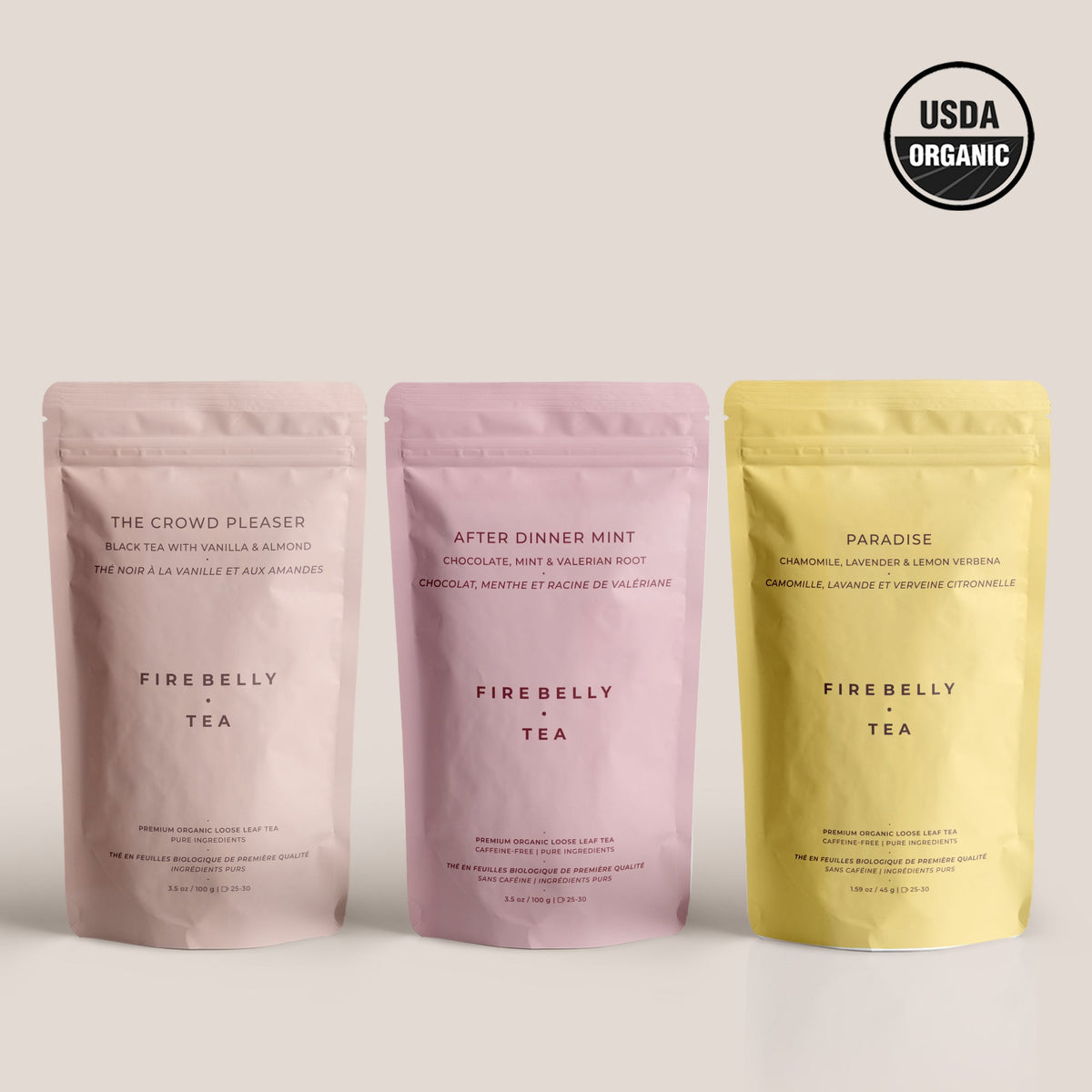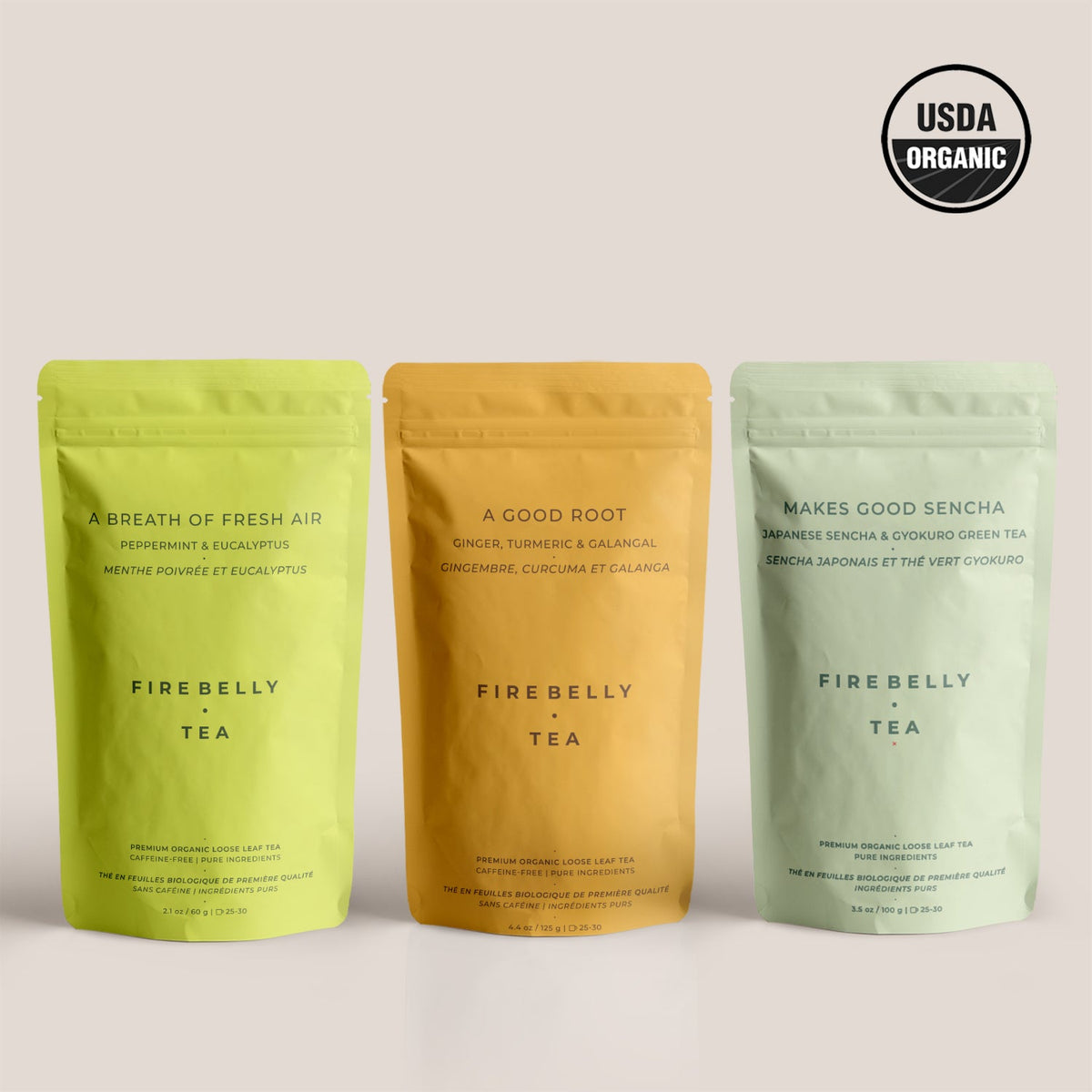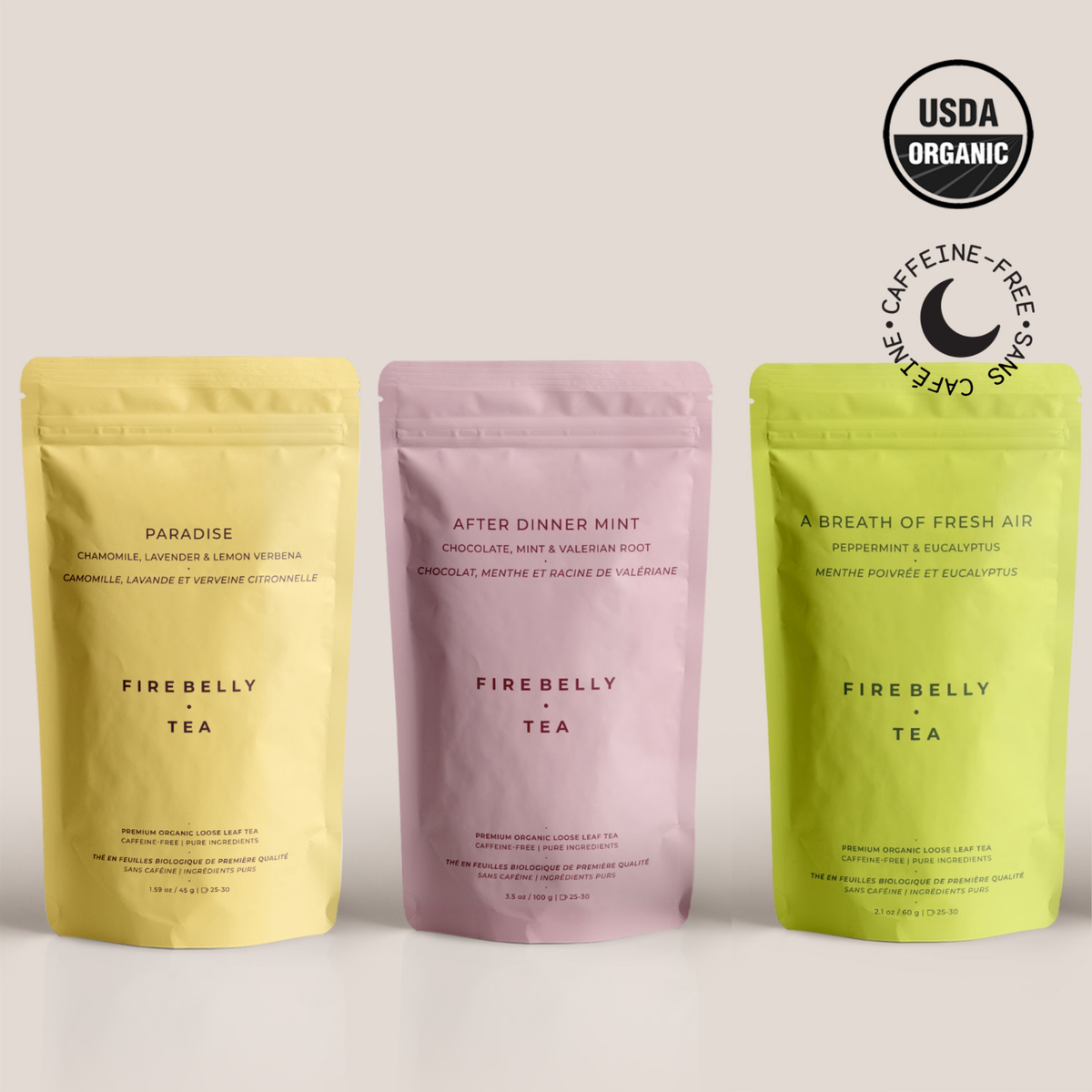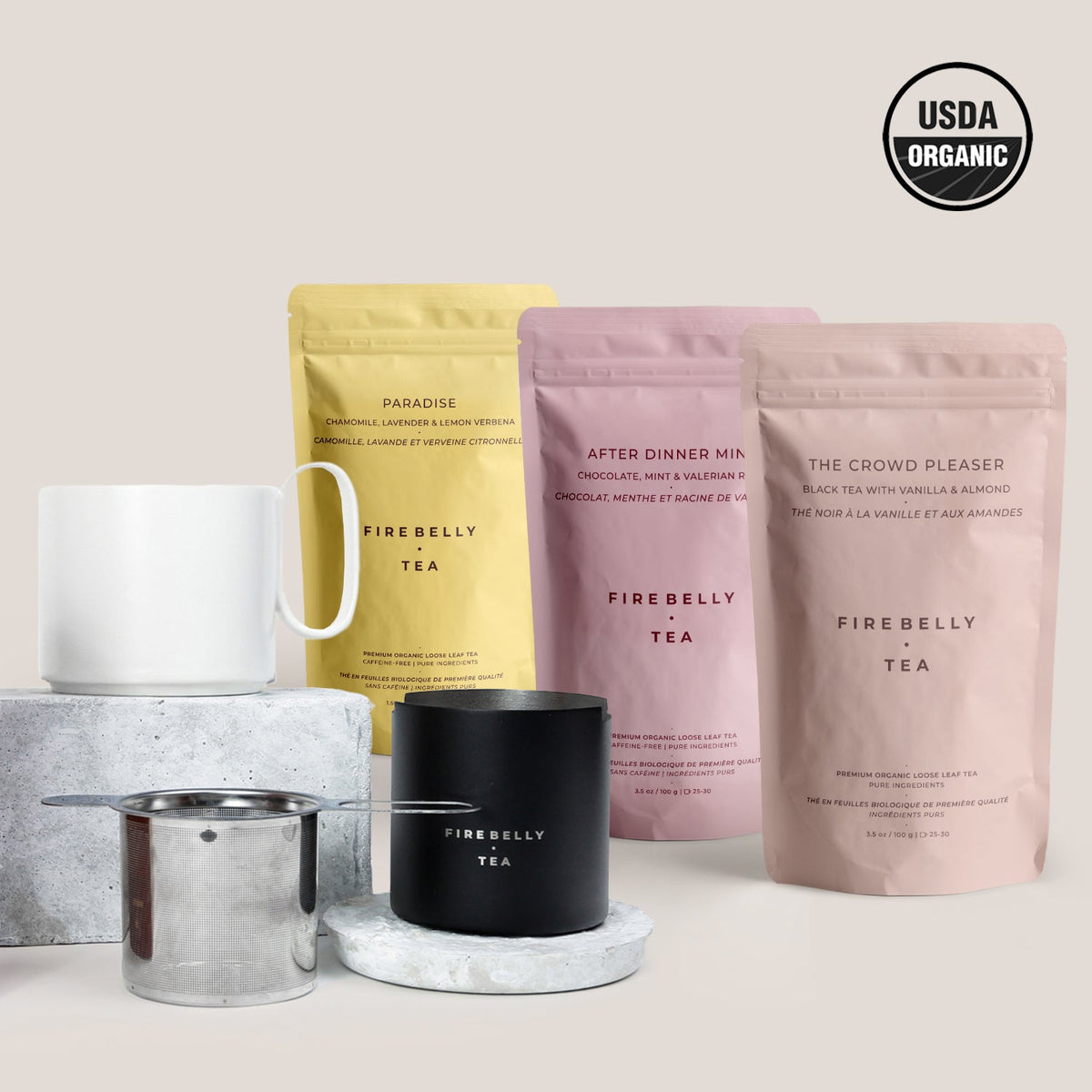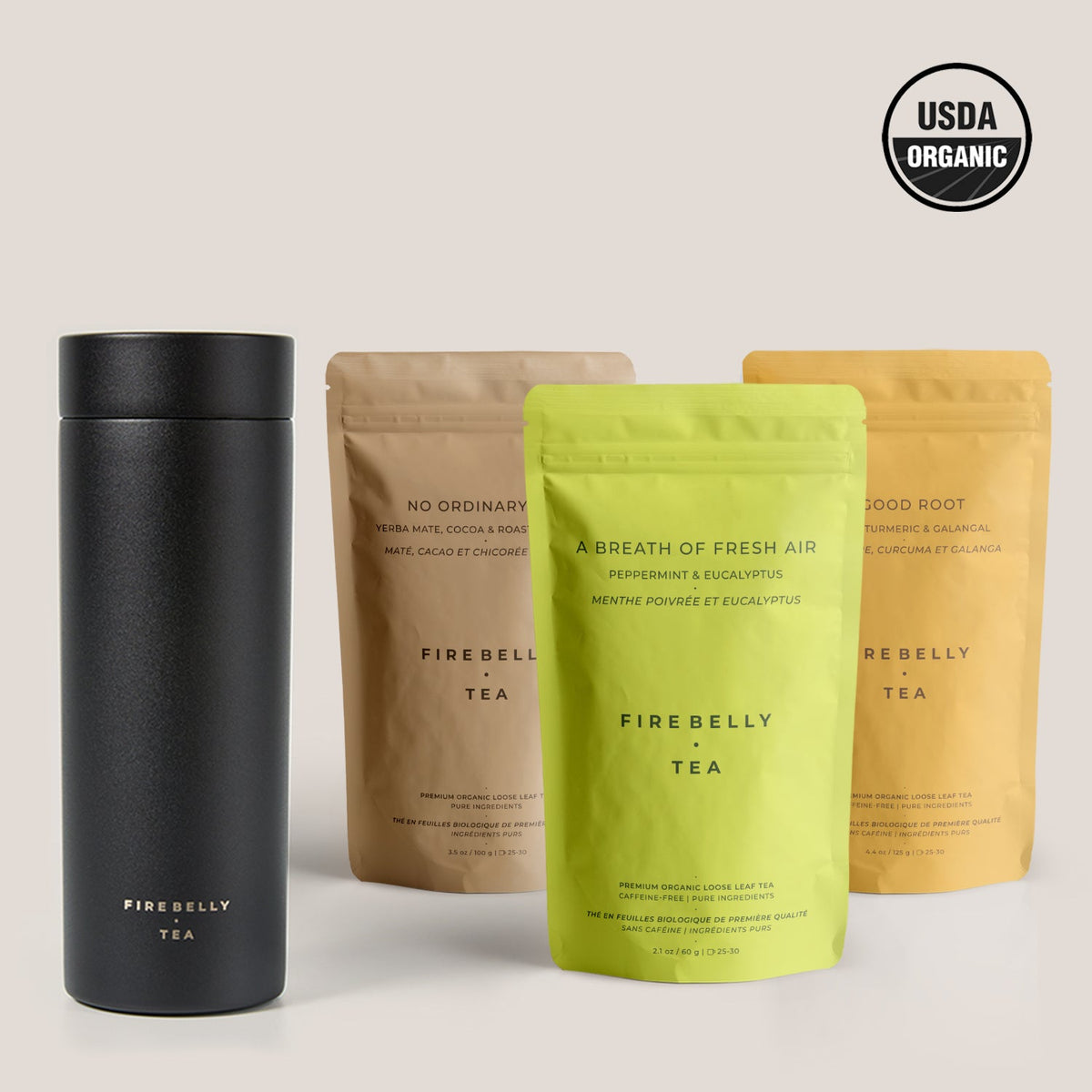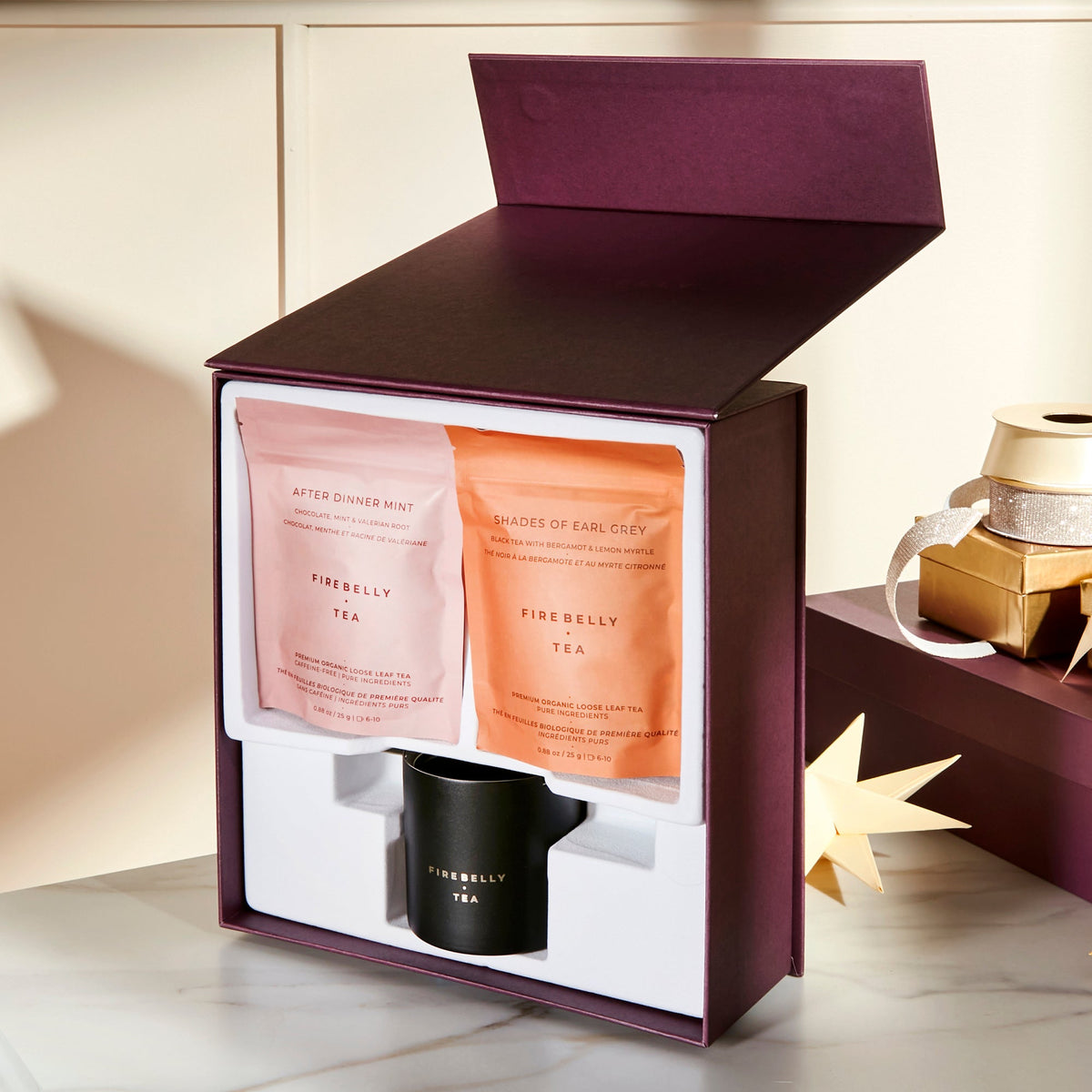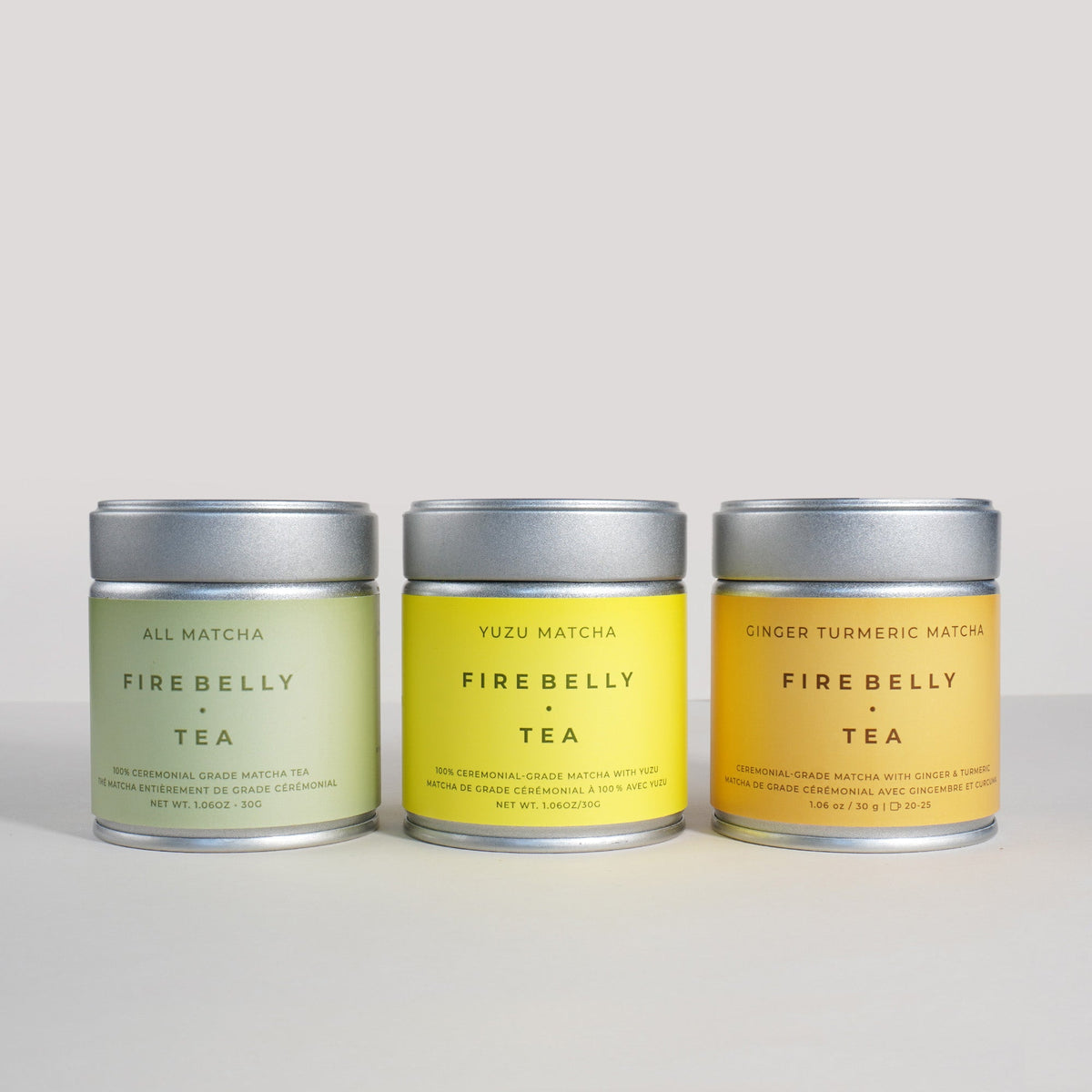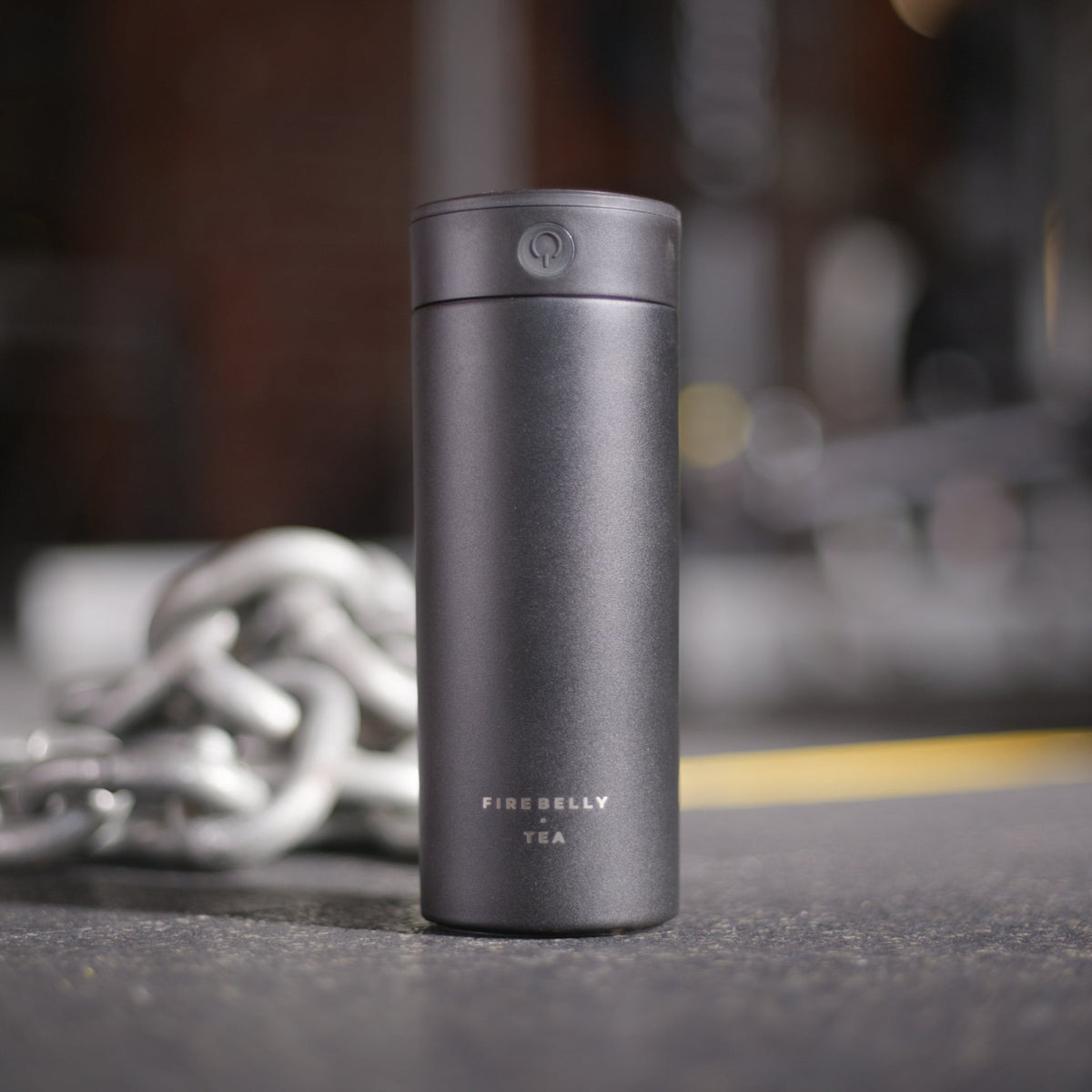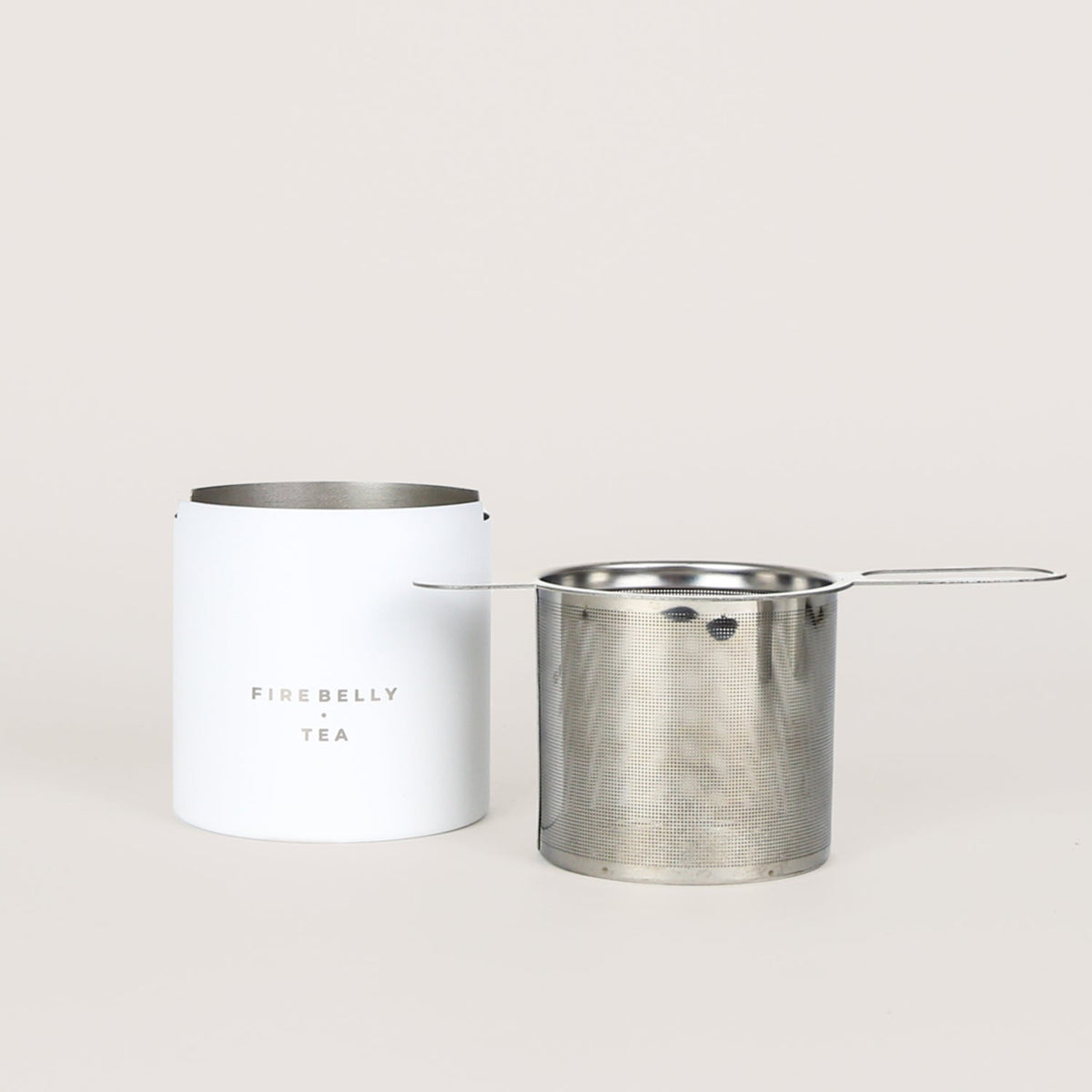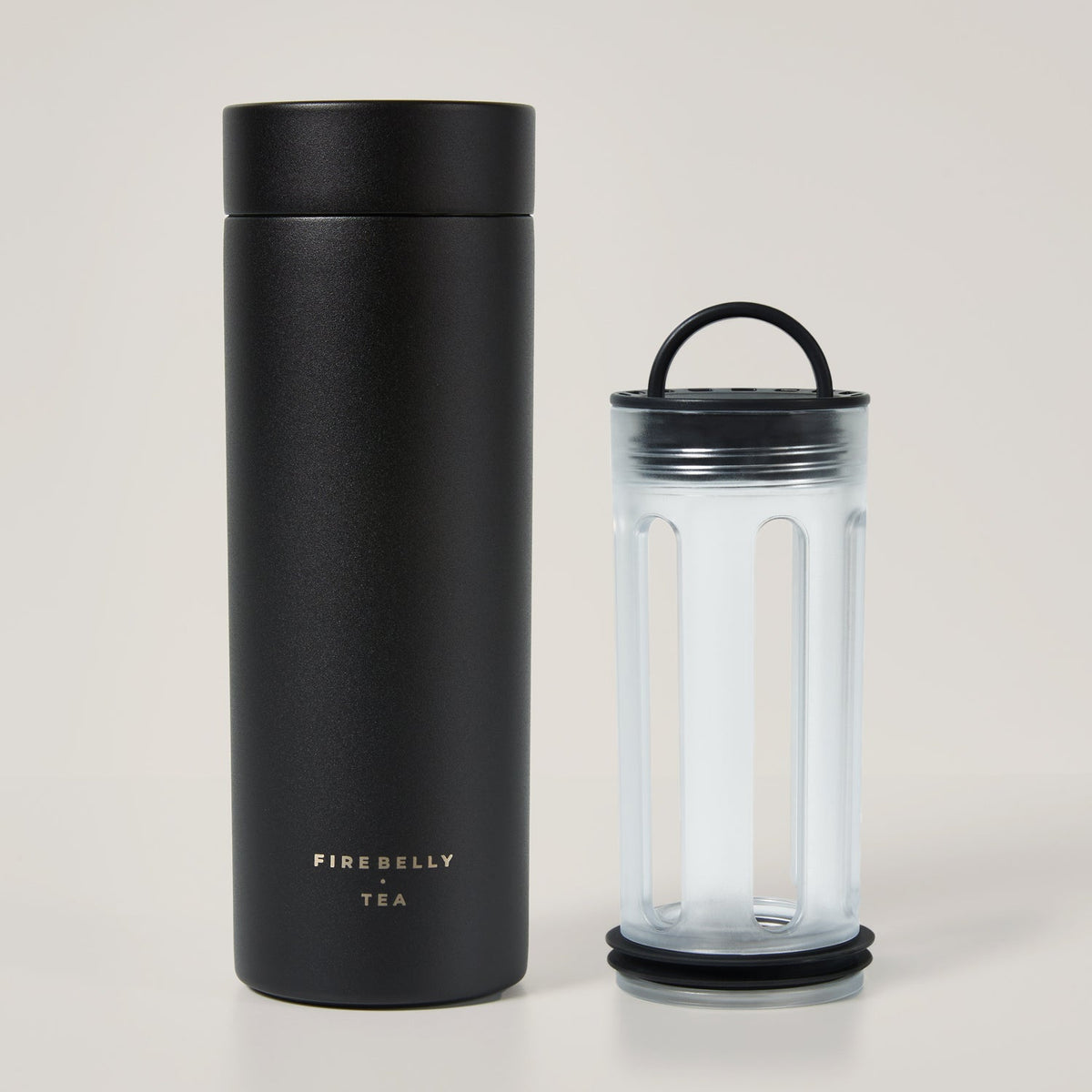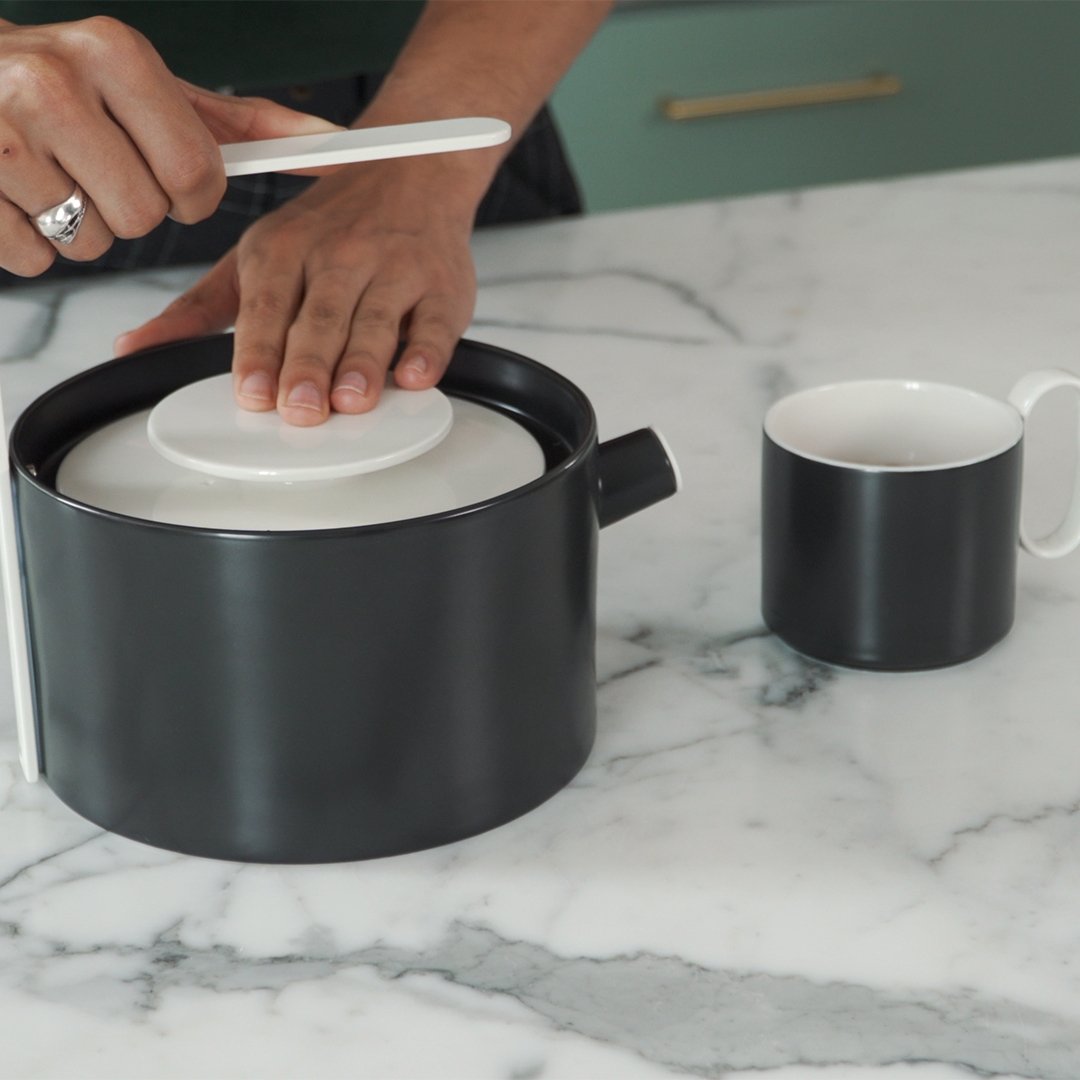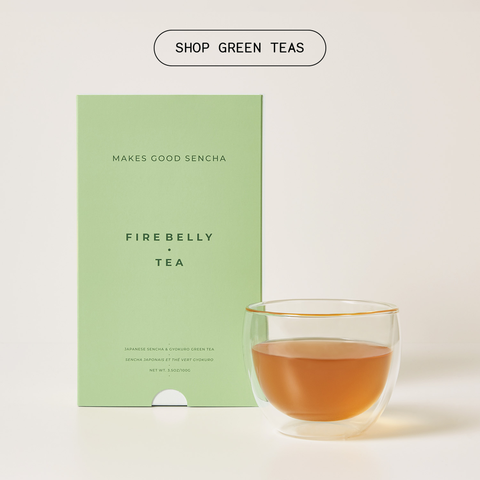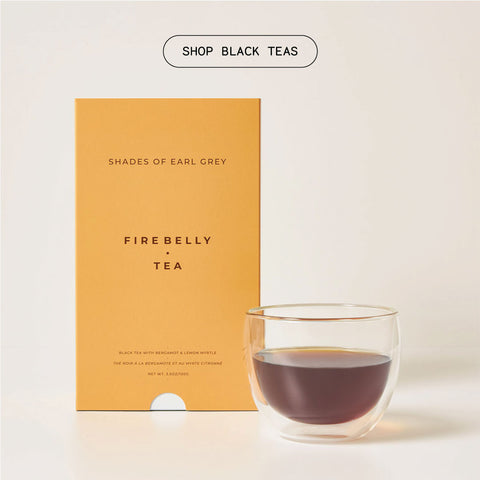There are so many varieties of loose-leaf tea, each with its own delicate aroma and complex flavor. Like fine wines, teas vary depending on whether they are pure, herbal, or spiced tea and where and in what climate they are grown. Different teas also require different brewing methods.
This guide explores some of the most popular types of tea and what makes each unique. It will help you fine-tune your steeping methods for different varieties of loose-leaf tea to get the sweetest, most aromatic cup of tea.
True Teas vs. Herbal Teas
If you're new to tea culture, you may not know that herbal tea differs from true or real tea. Instead, they are infusions made from steeping fresh or dried herbs, roots, or spices in hot water. You can combine or add ingredients to true teas to make flavored teas.
True teas are made from the leaves of the Camellia sinensis plant and include green, white, black, and oolong tea. These teas all contain caffeine. Although the leaves of this fascinating plant contain caffeine in higher concentrations than coffee beans, coffee usually has more caffeine because it's brewed more concentrated.
The caffeine content in your cup of pure tea depends on the types of tea you're brewing and how you brew it. White teas usually have the least caffeine, while green and black tea have the highest concentrations.
Wonderful White Tea
There are only two simple steps in the manufacturing process of white tea, making it the least processed true tea. All white teas are produced in Fujian, China. The baby tea leaves are harvested and immediately dried in natural sunlight, resulting in a delicate tea.
Two popular white tea varieties are White Peony and Silver Needle. White Peony has a mildly sharp and sweet flavor because it incorporates the tea plant's buds and leaves. Silver Needle gets its sweet honeysuckle taste from only the plant's buds.
How to brew white tea
To get the best cup of naturally sweet, delicately flavored white tea, use these ratios:
-
Temperature: 175°F
-
Leaf-to-water ratio: 2tsp per 8oz of water
-
Steeping time: 2 minutes
Is Green Tea the Greatest?
Green tea production consists of multiple steps. Like white tea, green tea leaves are not oxidized. Instead, they are harvested and then withered to reduce moisture. The next step is pan-firing or steaming the leaves at high temperatures until they dry. During this process, tea masters roll the green tea leaves into long twigs or pearls, depending on the variety.
Gunpowder, genmaicha, sencha, and matcha tea are green tea types with different qualities. Gunpowder is one of the most popular Chinese teas. It's rolled into pellet shapes that resemble bullets. Genmaicha combines green tea leaves with roasted grains like brown rice. Sencha is Japan's most popular green tea. Matcha is a green tea that's ground into a fine powder.
Most green teas have a grassy, vegetal taste but with a sweet aftertaste. Some strong brewed green teas have an astringent flavor, while Genmaicha tastes more roasted. Sencha has a fruity flavor profile, and Matcha tea has a sweet nuttiness with a slightly bitter undertone.
How to brew green tea
Get the most out of green tea by using these ratios to achieve the most balanced flavor and maximum health properties:
-
Temperature: 170°F
-
Leaf-to-water ratio: 1-1.5 tbsp per 8oz of water
-
Steeping time: 2-3 minutes
What About Oolong Tea?
Oolong tea is another one of the top Chinese teas and has been enjoyed for centuries. It has a semi-oxidized tea with a stronger profile than white tea but is milder than green and black tea. Oolong teas can have a dramatically varied flavor profile depending on the environment's soil conditions.
Oolong has a floral flavor profile with a smooth finish. Pouchongs are the least oxidized oolong teas and are the most floral-tasting oolong tea varieties. They are similar to green teas. The most heavily oxidized oolong is Da Hong Pao from China. It has a strong, smooth, and slightly malty flavor.
To produce oolong, the tea leaves are harvested from the Camellia sinensis, withered, rolled, oxidized briefly, and dried. Although oolong is slightly fermented, tea makers stop fermentation by applying heat to the leaves early.
How to brew oolong tea
To get the most out of this super healthy and delicious tea, use these ratios:
-
Temperature: 195°F
-
Leaf-to-water ratio: 1-1.5 tbsp per 8oz of water
-
Steeping time: 3 minutes
Beautiful Black Tea
In China, western-style black tea is called red tea, but in the rest of the world, it's known as black tea. This tea is mainly produced in China, India, and also in Sri Lanka, formerly Ceylon. India has the highest quantities of Darjeeling and Assam tea.
Assam has a malty flavor with an earthy aroma, and Darjeeling is more delicate with fruity, floral flavors. Ceylon black teas have a bold flavor featuring citrus, spice, and chocolate notes.
Black tea is the most processed tea manufactured from the Camellia sinensis plant. It is harvested, bruised, withered, rolled, oxidized, and dried. Some black tea types are oxidized longer than other teas, while others, like Darjeeling tea, are only semi-oxidized.
How to brew black teas
The best brewing methods for black tea use the following ratios:
-
Temperature: 195°F
-
Leaf-to-water ratio: 1-1.5 tbsp per 8oz of water
-
Steeping time: 3-5 minutes
Pu-Erh Tea is a Pure Pleasure
This fascinating tea is a favorite with discerning tea enthusiasts for its robust flavor profile, incredible health benefits, and interesting manufacturing process. Pu-Erh tea is also manufactured from the Camellia sinensis plant but has a different manufacturing process from the other pure teas and is post-oxidized.
After the tea leaves are harvested, they are immediately subjected to high temperatures. The heat destroys the enzymes that play an essential role in oxidizing tea leaves, resulting in a tea that is technically a green tea variety.
Aged pu-erh tea goes through a similar process but is aged like fine wine. These tea leaves are typically aged between 10 and 15 years, but the highest quality pu-erh tea can be as much as 50 years old. As the tea leaves age, they are naturally oxidized, which is why they are considered post-oxidized or post-fermented.
How to brew pu-erh tea
-
Temperature: 195°F
-
Leaves-to-water ratio: 1 1/2 tsp per 8oz of water
-
Steeping time: 5 minutes
Tingle Your Tea Buds With Rooibos Tea
Rooibos tea is not made from the same leaves as true tea. Instead, it's made from the leaves of the Aspalathus linearis plant, which almost exclusively grows in the Cederberg mountains of South Africa. It is harvested, withered, rolled, oxidized, and dried. The green leaves become deep red during the process, giving this delicious tea its name. Translated from Afrikaans, "Rooibos" means "Red Bush."
Rooibos is naturally caffeine-free and has a sweet, nutty, refreshing flavor. It is an excellent base for flavored teas.
How to brew rooibos tea
-
Temperature: 195°F
-
Leaves-to-water ratio: 1-1.5 tbsp per 8oz of water
-
Steeping time: 6-9 minutes
Is Herbal Tea Your Favorite?
Herbal teas are made without tea leaves from Camellia Sinensis. It's usually caffeine free and can be made with flower buds, roots, or stems from various plants. You can choose delicately sweet floral, herbal teas like chamomile, jasmine, and hibiscus or citrusy teas like lemon and bergamot. Root teas, including dandelion root, valerian, and ginger, can be spicy, pungent, and earthy.
Herbal tea is caffeine-free and excellent for your health, depending on the health properties of your ingredients. It also makes a great iced tea! Herbal infusions can contain caffeine because they combine flowers, herbs, spices, and true tea. Jasmine green tea and black chai tea are examples of herbal infusions.
How to brew herbal tea
-
Temperature: 195°F
-
Leaves to water ratio: 1-1.5 tbsp per 8oz of water
-
Steeping time: 6-9 minutes
Tea Brewing Tips
Now you have the basics of how to brew tea, here are some tips to take your favorite tea to the next level:
Tip 1 - Not All Water is Equal
Water is water, right? Wrong. You will elevate your drink when you use good water for brewing tea. It's best to brew tea with spring water because it is delicate; water with chlorine or high mineral counts can drastically affect the taste.
A good water filter is an excellent investment if you use municipal water for brewing tea. If you use soft or distilled water, it may leave the tea a little flat. If you use well water, ensure the pH level is as close to neutral as possible. If you steep tea in water with a too high or low pH, it can adversely affect the taste.
Tip 2 - The 2 Ts: Temperature and Time
Two of the most critical factors for brewing tea are water temperature and tea brewing times. Green teas do well with lower water temperatures and shorter infusion times - this also applies to greener oolong teas. Darker oolong and black teas can withstand hotter temperatures because they are less delicate than green tea.
You can use this simple trick to avoid investing in a fancy kettle with a water temperature gauge. Leave the boiling water for five minutes. It will drop to around 180° F in that time. You can then add your tea infuser or tea bag to the hot water without worrying that it's too hot.
If you want a cold brew or a stronger tea, feel free to adapt water temperature and time.
Tip 3 - The Type of Tea
Loose-leaf teas can get a little complicated! The leaf size will affect tea brewing time and how many leaves you use. Smaller cut leaves generally infuse faster because they have more surface. It means you'll need less tea and a shorter steeping time. Larger leaves require a larger volume of leaves and longer steeping times.
Green and black teas are intense and generally have shorter steeping times. However, the same tea can taste different depending on whether you choose in a tea bag or loose-leaf tea.
If you enjoy a bolder, more intense flavor, add more tea and let your tea steep for longer. Remove your tea bags or infuser sooner if you prefer a more delicate flavor. You'll quickly have the tea brewing skills of a master tea maker.
Although this may sound incredibly technical, you can take the simple approach: experiment and have fun with your tea-brewing adventures!
Tip 4 - Loose Tea Leaves Are Better Than Bags
Yes, they are! But if you prefer tea bags, that's okay too. We're happy as long as you're reaping the benefits of drinking tea!
However, brewing loose-leaf tea is our number one choice because it gives you the best flavor and the most health benefits.
Whether you prefer true teas or herbal ones, endless delicious options for different flavors exist. You're bound to find a few firm favorites. Why not try the Firebelly Tea Top 10 variety pack? Your favorite whole-leaf tea is waiting for you to discover it!
Tip 5 - Don't be afraid of Gongfu Brewing
Gongfu brewing is a traditional method of making tea that comes from China. It simply means that you can steep tea up to a dozen times instead of only once. Each time you steep the tea, the flavor will change and develop.
Western-style tea brewing may be the simplest way to rustle up a tasty cup of tea, but Gongfu brewing is not to be missed if you're one of the more adventurous tea drinkers. If steeping tea more than once appeals to you, watch this space. An article on Gongfu brewing is coming soon. Brewing loose-leaf tea has never been this exciting!
A World of Flavor Awaits With Loose-Leaf Tea
Now you have everything you need to know to make the perfect cup of tea for even the most discerning tea drinkers. Your next step is ensuring you have the right equipment and some of your favorite premium loose-leaf tea. Firebelly Tea has a wonderful collection of different types of tea.
Whether you enjoy a spicy chai tea or a delicate herbal infusion, there's a tea for every taste. If you want to make your best brew in style, Firebelly Tea accessories are a must-have! We also offer some excellent accessory bundles to make your tea-making journey easier.
